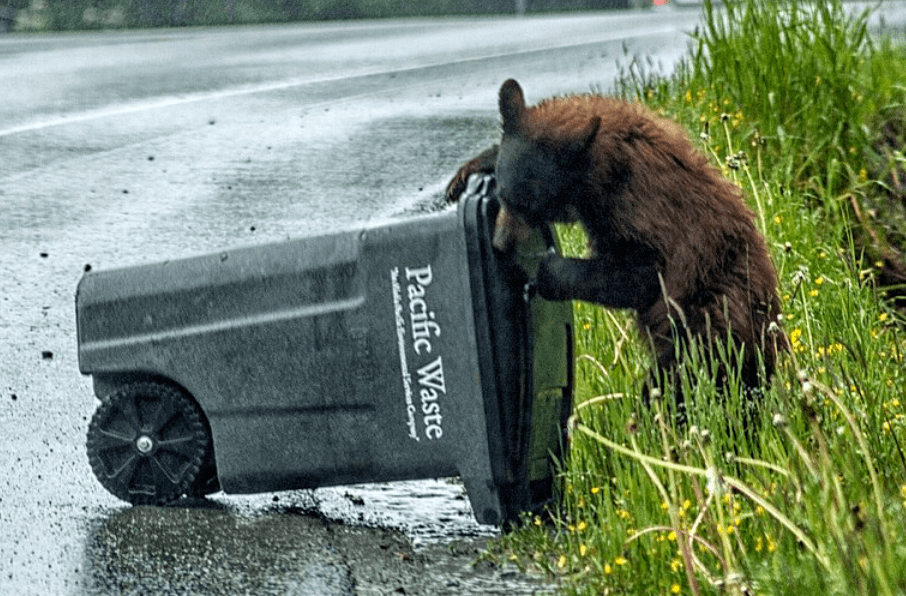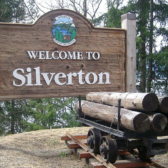2022 one of worst human-bear conflict seasons on record: The Ursa Project
This fall has been one of the worst human and bear conflict seasons on record, according to a Nelson non-profit group dedicated to reducing the encounters.
The Ursa Project (Society) members felt the fate of the 2022 fall season was fitted with two facts that underlined why it was deemed such a bad year for battles with bruins in Nelson.
“With climate change impacting bear’s natural food sources, bears have no choice but to seek out alternate food sources in human populated territories,” the society noted in a “group” interview on the matter.
“We see this pattern of increased conflicts every time there’s a bad berry year. With limited resources, the bears will actively seek out ways to replace the lack of berries and, as a result, we see more bears in town.”
The nature of Nelson itself plays a role in the second reason for conflicts: A growing population means more people with little to no knowledge of how to live in bear territory moving here, and exacerbating bear conflicts.
“We already have a disturbingly high level of apathy among long-time residents, but it is steadily getting worse with all of the newcomers,” The Ursa group stated. “The stats aren’t lying: Nelson is in the top 10 of most dangerous communities for bears, and that we rank much worse than cities with much higher populations.”
Being part of the solution
The Ursa Project claimed that the prospect of bears being trapped and destroyed this year as a result of the conflicts that occurred with humans entered a larger stage this year because of the 2022 Municipal Election in October.
“Numerous residents were traumatized and enraged by this and the topic of city waste management became an election issue,” The Ursa Project pointed out.
The non-profit working group, The Ursa Project, was another response to the bear issue. “Unsecured garbage was strewn repeatedly along streets and parks. Restaurant garbage that bears dragged from dumpsters, left open the night before, was repeatedly scattered through laneways and often remained there well into the next day as these restaurants do not open in the morning.
“Residents faced not only the mess, but the bears also. One restaurant patron had a close encounter with a bear while exiting the restaurant they had just dined at.”
But the solution must address the root of the problem, which is bears continually accessing attractants in the community and becoming food conditioned.
“As we live in a wildlife corridor with a high rate of both human-wildlife conflict and lethally destroyed bears, there is a need for enhanced education, increased bylaw enforcement, and a commitment from all sectors of the community to engage in a proactive approach to managing attractants,” The Ursa Project wrote.
More parts for players
There are two sectors of society that can make a difference in reducing the conflicts with bears, The Ursa Project contended: the municipality and its residents.
“Municipalities are responsible for managing wildlife attractants within their jurisdiction and simply having unenforced wildlife attractant bylaws in place is not at all adequate.”
Members of the project call upon the city to be “responsible” and take a “proactive approach and commit to the work required to become a Bear Smart Community.” The Bear Smart Community program addresses human bear conflict in two phases: identifying sources of conflict; and development and implementation of a management plan.
“The process involves shifting from the reactive management of ‘problem’ bears to the proactive management of the attractants that draw bears into communities.”
Residents in Nelson need to take responsibility as well and make every effort possible to manage attractants on their properties.
“This includes keeping fruit and nut trees picked, feeding pets indoors, keeping your barbeque clean, removing bird feeders during months of bear activity, and properly managing their composters,” The Ursa Project noted.
Some of the aspects recommended in the Bear Smart program — such as increased garbage pickup and bear resistant garbage bins — would allow people in Nelson to do their part to secure their garbage so that it was not accessible to bears.
The members of The Ursa Project pointed to communities like Kaslo where the Bear Smart program has operated with success.
“A big part of Kaslo’s Bear Smart success comes from neighbours talking to their neighbours. When residents in Kaslo see bear attractants on properties around town, there is an active response and the neighbour is promptly informed that it is unacceptable and needs to be dealt with. This sort of self-policing can have a huge impact on reducing bear attractants and, in turn, can reduce the amount of bylaw intervention that could otherwise be necessary.”
What it comes down to is people need to realize that the responsibility to manage human and bear conflicts lies with everyone.
“Bears living among us are not the problem,” The Ursa Project stated. “Bears prefer to avoid conflict. The problem is people teaching the bears bad habits and allowing them to access attractants, whether it is unintentional or not. This inevitably leads to bears becoming food conditioned and habituated, and then lethally destroyed, as witnessed every year in Nelson.”


























